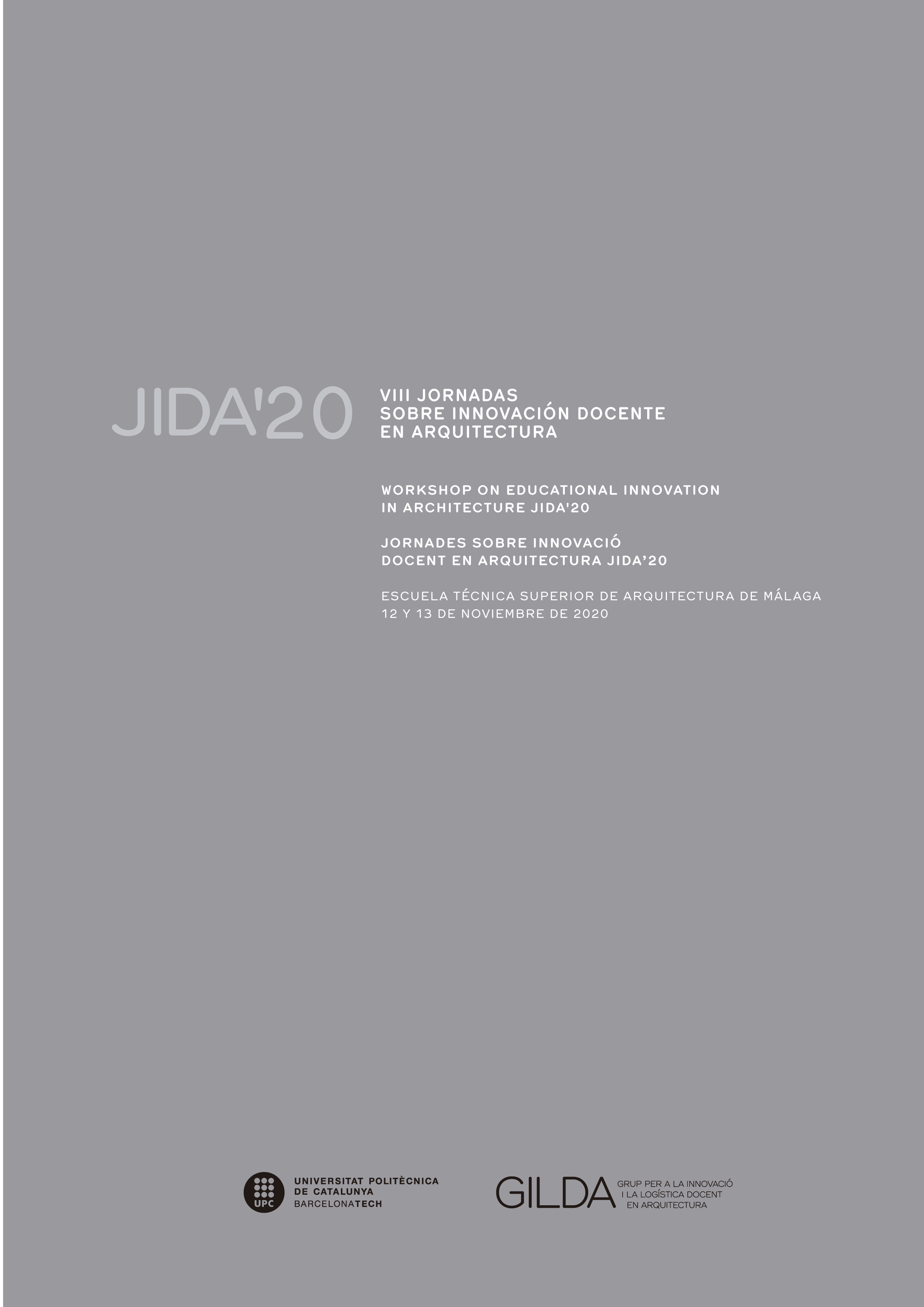Database Driven Lab as a pedagogical model
DOI:
https://doi.org/10.5821/jida.2020.9344Abstract
This paper presents the main principles of the Database Driven Lab, a pedagogical model that assimilates the inherent logic of digital media in order to approach contemporary urban reality. It is a model that confronts the heterogeneous nature of the real with different conceptual models by leveraging the relational flexibility that characterizes a number of digital formats. Among those, the website –the format that most clearly reflects such logic– is designated as the main driver of a learning process that stresses the simultaneously individual and collective nature of contemporary research practices. A recent experience that took La Manga del Mar Menor as its subject of study will reveal the main potentials and constraints of the model.References
BOLTER, J. D.; y GRUSIN, R. (1999). Remediation: Understanding New Media. Cambridge, Mass.: MIT Press.
CHUNG, C. J. et al. (2001). Great Leap Forward. Köln: Taschen.
DEVESA, R. (2015). “Difundir lo aprendido: razones y medios†en BARDÃ-MILÀ, B.; y GARCÃA-ESCUDERO, D. III Jornadas sobre Innovación Docente en Arquitectura (JIDA’15), Escuela Técnica Superior de Arqutiectura de Barcelona, del 25 al 29 de mayo de 2015. Barcelona: UPC IDP; GILDA, p. 78-89.
HEISEL, F.; y KIFLE, B. (2016). Lessons of Informality: Architecture and Urban Planning for Emerging Territories – Concepts from Ethiopia. Basel: Birkhäuser, 2016.
KOOLHAAS, R. et al. (2000). Mutations. Barcelona: Actar.
LYNCH, K. (1960). The Image of the City. Cambridge, Mass.: Technology Press.
MANOVICH, L. (2006). El lenguaje de los nuevos medios de comunicación: La imagen en la era digital. Buenos Aires: Paidós.
McLUHAN, M. (1964). Understanding Media: The Extensions of Man. New York: McGraw-Hill.
MITCHELL, W. J. (1992). The Reconfigured Eye: Visual Truth in the Post-Photographic Era. Cambridge, Mass.: MIT Press.
NEGROPONTE, N. (1995). Being Digital. London: Hodder & Stoughton.
PETERS, I. (2009). Folksonomies. Indexing and Retrieval in Web 2.0. Berlin: De Gruyter Saur.
STADLER, H.; STIERLI, M.; y FISCHLI, P. (2008). Las Vegas Studio: Images from the archives of Robert Venturi and Denise Scott Brown. Zürich: Scheidegger & Spiess.
SOJA, E. (2000). Postmetropolis: critical studies of cities and regions. Los Ãngeles: Blackwell Publishing.
SOLÀ-MORALES, I. (2001). Mediations in Architecture and in the Urban Landscape. Luzern: Quart Verlag.
STIERLI, M. (2009). “In Sequence: Cinematic perception in ‘Learning from Las Vegas’†en Hunch: The Berlage Institute Report, no. 12, p. 76-85.
ZEIGER, M. (2013). “Toward a Collective Criticism†en Volume, 36, p. 112-116.






















